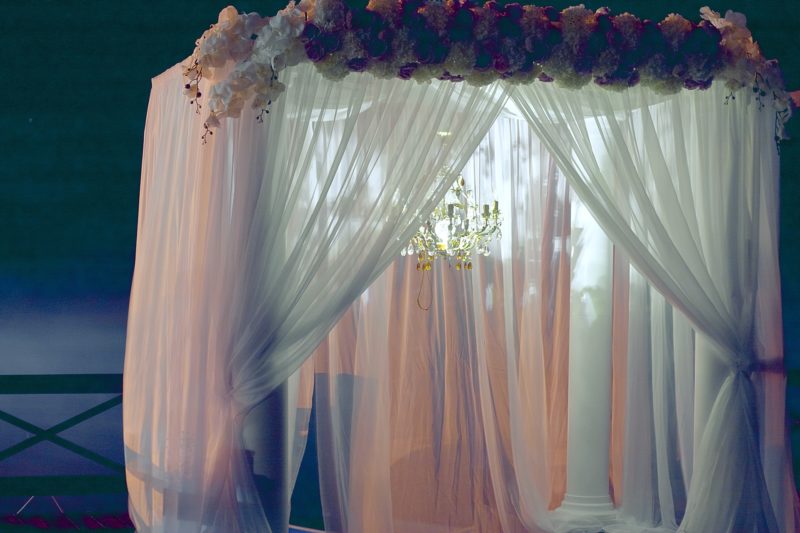There is always the struggle to know what type of curtain format should you use to decorate your home. However, once you have mastered how to make hidden tab curtains, this might be your new favorite type of drapery.

The different curtain styles all offer distinct decorative properties. It can range from casual to formal, classic to trendy, modern to contemporary, and many more. Curtain hardware like pre-installed grommets and ring clips also makes the curtain easier to move around the rod.
These hidden tab curtains are a special type of curtain that designers also refer to as back tab curtains. You can visualize it according to its name. It looks like your regular curtain, but instead of rod pockets and tab tops, it has strips of fabric sewn onto its rear side.
The hidden tabs allow you to hang and conceal the rod and other curtain hardware behind it. Hide rod brackets and plain curtain rods behind the thick piece of drapery. Hidden tab curtains can also come in sheer fabric, but the lightness of the material affects the hiding effect.
Nonetheless, back tab curtains are a great way to give fashion a minimalistic and tailored look. The hidden strips of fabric give the curtain the illusion of floating in space and creates a rather clean line at the top and bottom parts.
Since the fabric rests barely on the rod, the curtains are somehow held in place and difficult to move around. It helps give pleats a crisp edge while maintaining equal placements between the folds. Just don’t attempt to open and close your drapes often. You will find out more about that here.
Choose your fabric to make the hidden tab curtains and gather your sewing materials. You should pre-measure your window to determine your curtain’s dimensions. Multiply the window’s actual width by a fullness factor of two or three to get the curtain width.
Divide the curtain’s width into two to determine the width of your two panels. Next, decide on the length of your entire curtain, starting from the rod to the top. The length should include a two or three-inch high strip of the fabric to attach the tabs. The rest is the actual length of the panel.
Step 1: Prepare your fabric.
Using the measurements that you have taken, measure and mark the fabric. Use a pencil to mark the actual sizes of the panel and mark the seam where you will attach the tabs. Move ½ inch towards the outside of the curtain for the seam allowance.
Make the facing piece that will hide the tab. It should also be two or three inches in height and the same width as your curtain panel. For the curtain tabs, get a long strip of fabric that is twice as wide as your tab’s actual width. Mark the cuts with uniform lengths.
Cut all the pieces, including the panels, tabs, and facings.
Step 2: Make the tabs.
We can start by preparing the tabs. Take one strip of the cut fabric and fold it lengthwise with the right or patterned sides facing each other. Stitch them together and turn them inside out so that the pattern is now visible. Lastly, press and repeat until you finish all the tabs.
Step 3: Prepare the facing.
The facing piece should be a long strip of fabric that matches the panel’s width. Take the short edges and fold them two inches inwards. Iron press to make the crease and then unfold the fabric. Fold it again in half from the pressed line, then iron and stitch. Do only one edge for both facing pieces.
Step 4: Hem the panels
Lay your long curtain panels and fold the top, bottom, and sides one inch going inwards. Secure the folds by pressing them together and attaching a sewing pin. Stitch the hems using a needle and thread or by simply running it under a sewing machine. Remove the pins.
Step 5: Piece the curtain together
Lay the drapery panels so that the patterned side faces you and press along the long edge. Get your measuring tape to determine the placements of the tabs. Make sure that you are putting them evenly across the curtain’s crown.
Pin the tabs with their raw edges up on the top hem of the curtain at the front. Make a half-inch seam and stitch it all the way across the top edge of the curtain. Pin the facing piece on top of the tabs and panels with their raw edges up.
Fold the tabs and facing piece and attach it to the back of the panel. Press the tabs and facing piece in place. You can pin it again before sewing the entire width with a half-inch seam. Remove all the pins, and that is how to make hidden tab curtains.
Hanging your curtains
Now that you have your back tab curtains together slide them onto the rod. If you want crisp and tailored pleats, try using a flat rod instead of the traditional round ones. A flat rod will prevent the fabric from moving around, giving you firm and elegant pleats.
You can try to use clip rings to hang your back tab curtains to make them easier to slide along the rod. All you have to do is attach the clip in the middle or bottom part of the tab. Overall, it is not too difficult to learn how to make hidden tab curtains. All you need is to brush up on your measuring and basic sewing.
